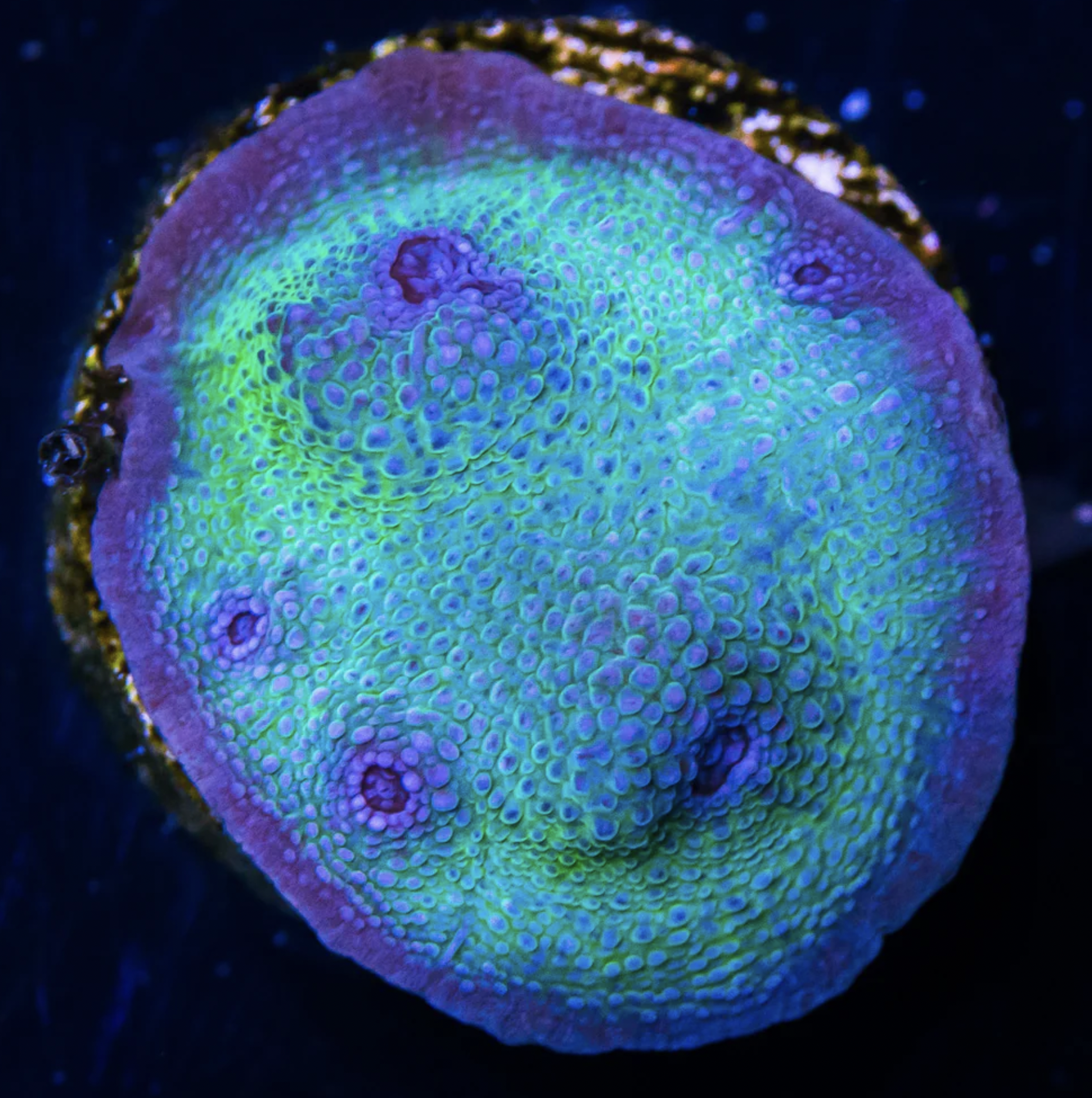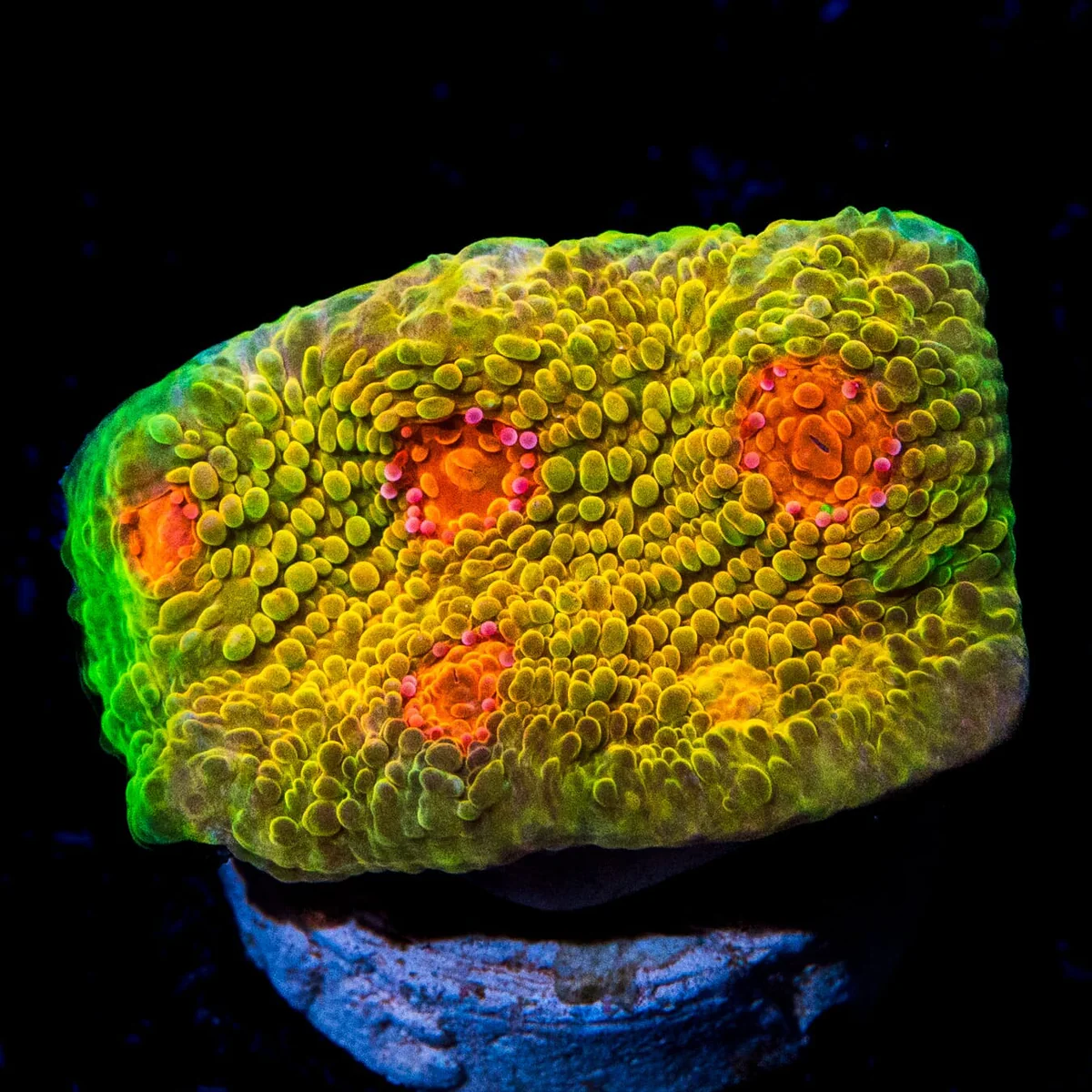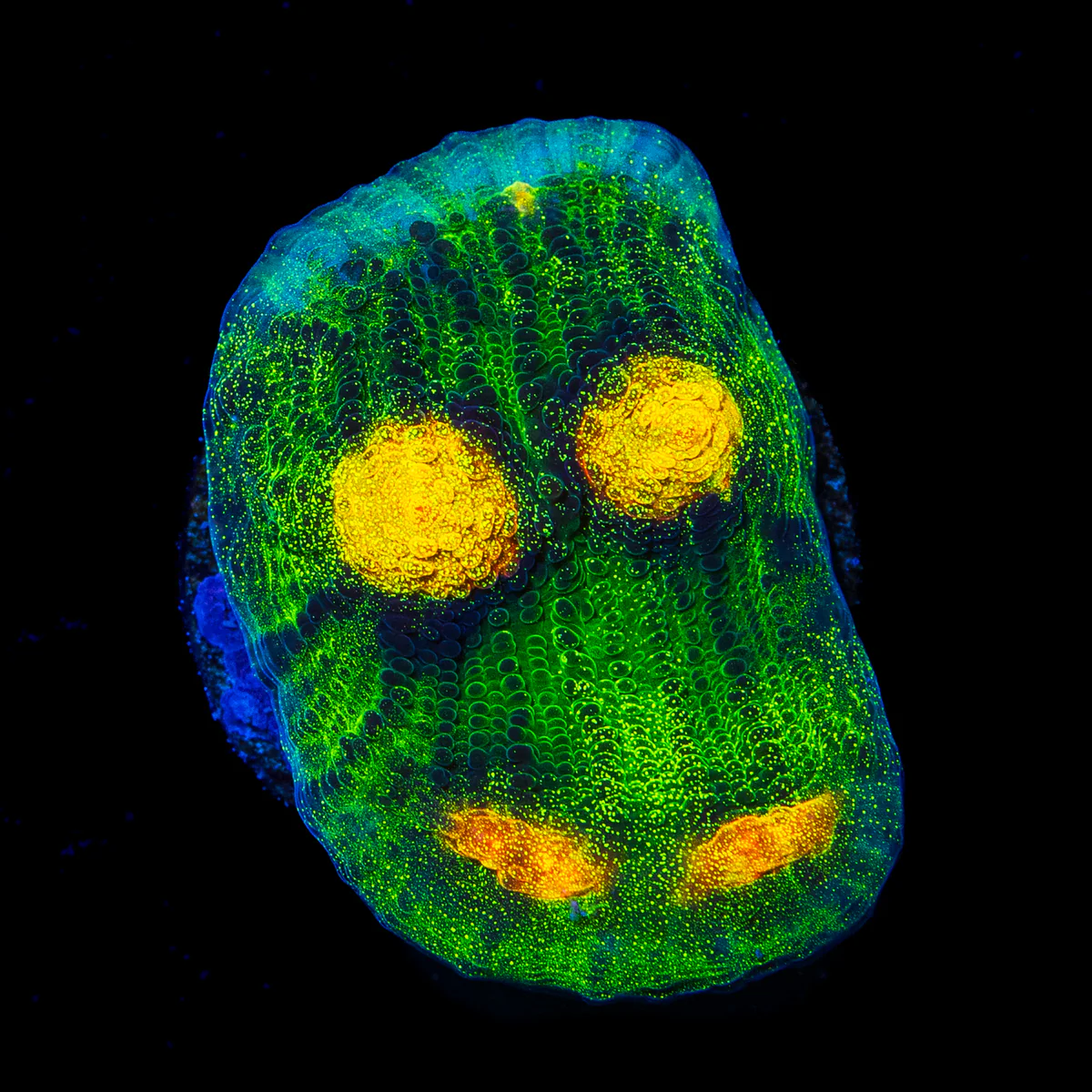Sour Grapes Chalice Coral
Chalice Coral (Echinophyllia & Related Species) Care Guide
Chalice Corals belong to several genera within the Pectiniidae family, including Echinophyllia, Oxypora, Mycedium, and Pectinia. These corals are prized for their vibrant colors, intricate growth patterns, and encrusting or plating forms. Though they are LPS corals, they have delicate tissue and require stable conditions to thrive.
Chalice Coral (Echinophyllia & Related Species) Care Guide
Chalice Corals belong to several genera within the Pectiniidae family, including Echinophyllia, Oxypora, Mycedium, and Pectinia. These corals are prized for their vibrant colors, intricate growth patterns, and encrusting or plating forms. Though they are LPS corals, they have delicate tissue and require stable conditions to thrive.
Chalice Coral (Echinophyllia & Related Species) Care Guide
Chalice Corals belong to several genera within the Pectiniidae family, including Echinophyllia, Oxypora, Mycedium, and Pectinia. These corals are prized for their vibrant colors, intricate growth patterns, and encrusting or plating forms. Though they are LPS corals, they have delicate tissue and require stable conditions to thrive.
You will receive a frag SIMILAR in shape and size to the coral in the photo. This is NOT a WYSIWYG frag. All our frags are generally 3/4” - 1”
Care Requirements:
Lighting: Low to moderate (PAR 50-150). Too much light can cause bleaching, so start with lower light and adjust as needed.
Flow: Low to moderate. Avoid direct, strong flow to prevent tissue damage while ensuring enough movement to keep debris off the coral.
Placement: Lower to middle areas of the tank, away from aggressive corals due to their sensitive tissue.
Water Parameters:
Temperature: 76-80°F (24-27°C)
Salinity: 1.025 SG (35 PPT)
pH: 8.1-8.4
Alkalinity: 8-12 dKH
Calcium: 400-450 ppm
Magnesium: 1250-1350 ppm
Feeding & Nutrition:
Chalice corals contain zooxanthellae for photosynthesis but benefit from target feeding 1-2 times per week with foods like mysis shrimp, reef roids, and other fine particulate coral foods. Feeding at night is ideal since they extend their feeding tentacles after lights out.
Compatibility & Challenges:
Can be aggressive—produces sweeper tentacles at night, so provide adequate spacing.
Prone to tissue recession if stressed by unstable water parameters or excessive flow.
Slow to moderate growth rate but can thrive with consistent care.
Final Tips:
Keep light and flow moderate, ensure stable water conditions, and provide occasional feedings for optimal growth. With proper placement and care, Chalice Corals can develop into stunning centerpiece corals in a reef aquarium!





